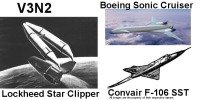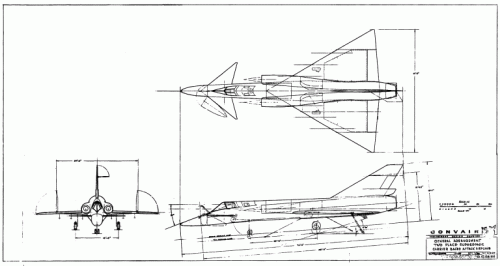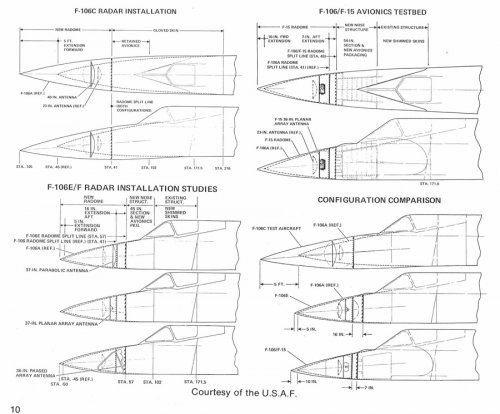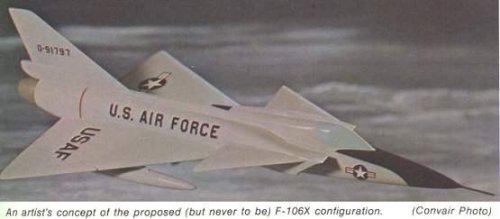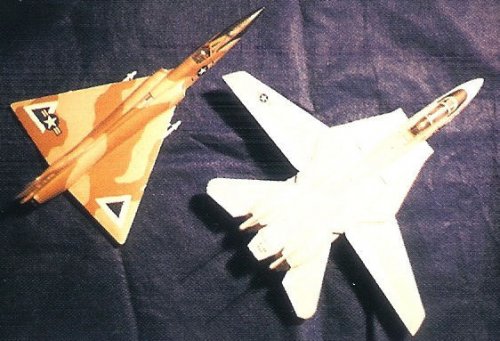- Joined
- 27 December 2005
- Messages
- 17,672
- Reaction score
- 25,772
F-106 "Fighter Bomber"
One proposal based on two seat F-106B with 3 x KA-8 cameras and ECM pods.
F-106A "Economy Fighter Bomber"
New search and bombing radar and nuclear capability. IFR socket in front of windshield. MTOW limited to 40,000lb to remain compatible with existing landing gear.
F-106 "Fighter Bomber"
Two seat version of above with strengthened undercarriage.
F-106 "strike aircraft (RCAF)"
Production by Canadair or Lockheed envisaged.
F-106 Japanese multirole
two pylons on each wing, MG-10 FCS.
F-106 with 1 x J58 engine
F-106C
F-106A with 40in radar antenna. Production F-106C would have new engine, new fuselage structure, and other changes.
F-106D probably a two seat version of F-106C
F-106-30 all weather interceptor
2 x J93 engines, 2 man crew, engines slung under wings like B-58, and a horizontal tail surface. Pulse doppler radar, and GAR-9 missiles.
F-106X (1968)
New radome and larger radar antenna. Modified FCS with lookdown capability. New AAMs. Competitor to YF-12. Added canards and revised intakes, and new engine with twice the power in the same size.
F-106E/F (1968)
Lookdown/shootdown radar and AIM-47 AAM, UHF two way voice and datalink.
Source:
Robert F. Dorr, Convair F-106 Delta Dart, Wings of Fame 12, 1998
William G. Holder F-106 Delta Dart, Aero Series 27, 1977
One proposal based on two seat F-106B with 3 x KA-8 cameras and ECM pods.
F-106A "Economy Fighter Bomber"
New search and bombing radar and nuclear capability. IFR socket in front of windshield. MTOW limited to 40,000lb to remain compatible with existing landing gear.
F-106 "Fighter Bomber"
Two seat version of above with strengthened undercarriage.
F-106 "strike aircraft (RCAF)"
Production by Canadair or Lockheed envisaged.
F-106 Japanese multirole
two pylons on each wing, MG-10 FCS.
F-106 with 1 x J58 engine
F-106C
F-106A with 40in radar antenna. Production F-106C would have new engine, new fuselage structure, and other changes.
F-106D probably a two seat version of F-106C
F-106-30 all weather interceptor
2 x J93 engines, 2 man crew, engines slung under wings like B-58, and a horizontal tail surface. Pulse doppler radar, and GAR-9 missiles.
F-106X (1968)
New radome and larger radar antenna. Modified FCS with lookdown capability. New AAMs. Competitor to YF-12. Added canards and revised intakes, and new engine with twice the power in the same size.
F-106E/F (1968)
Lookdown/shootdown radar and AIM-47 AAM, UHF two way voice and datalink.
Source:
Robert F. Dorr, Convair F-106 Delta Dart, Wings of Fame 12, 1998
William G. Holder F-106 Delta Dart, Aero Series 27, 1977


